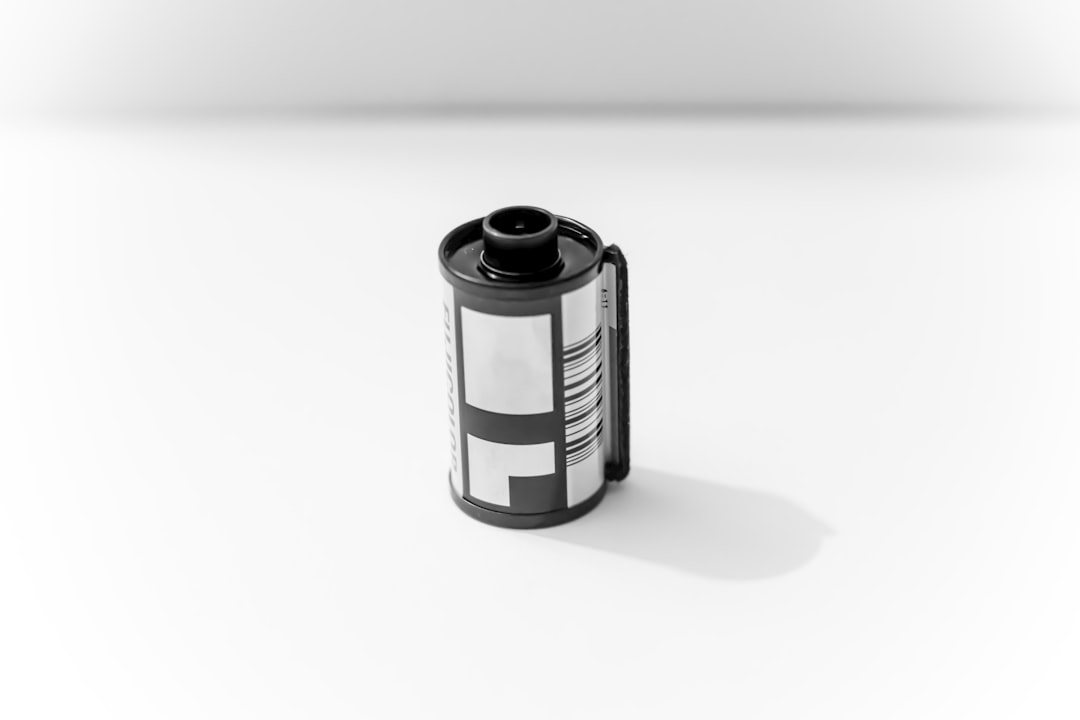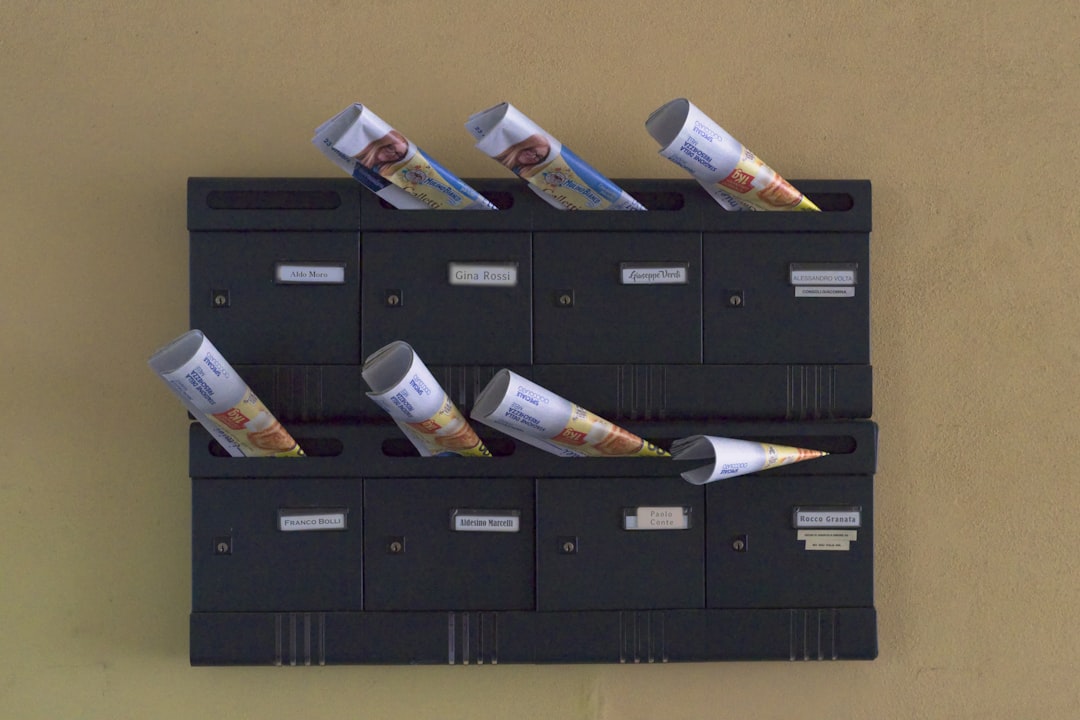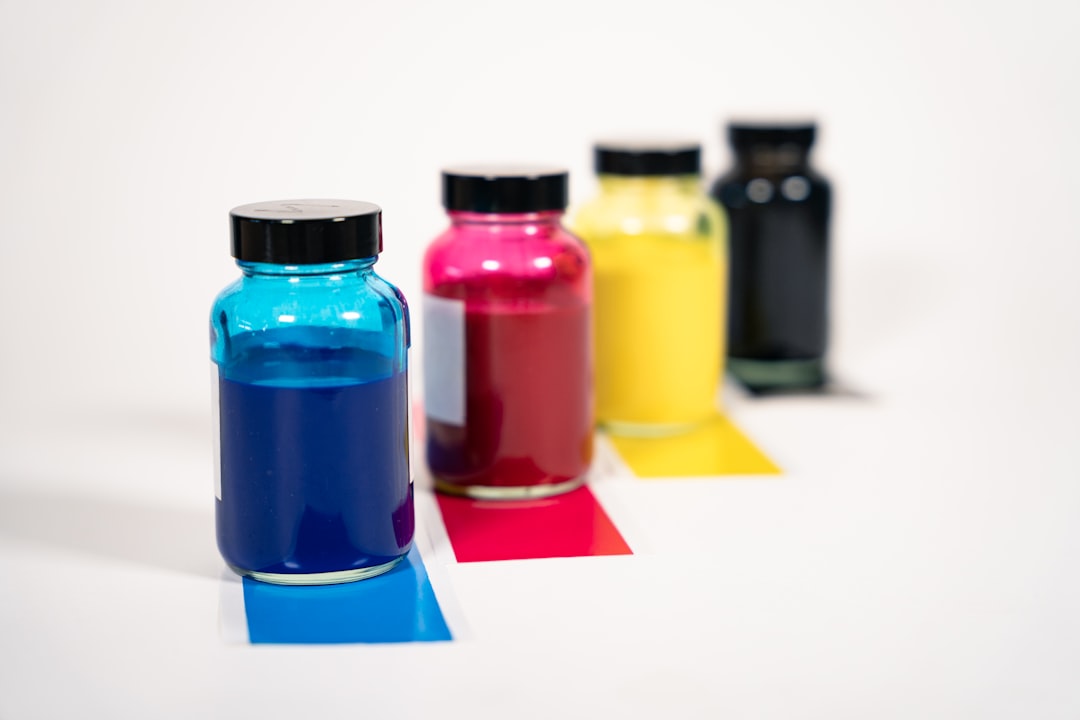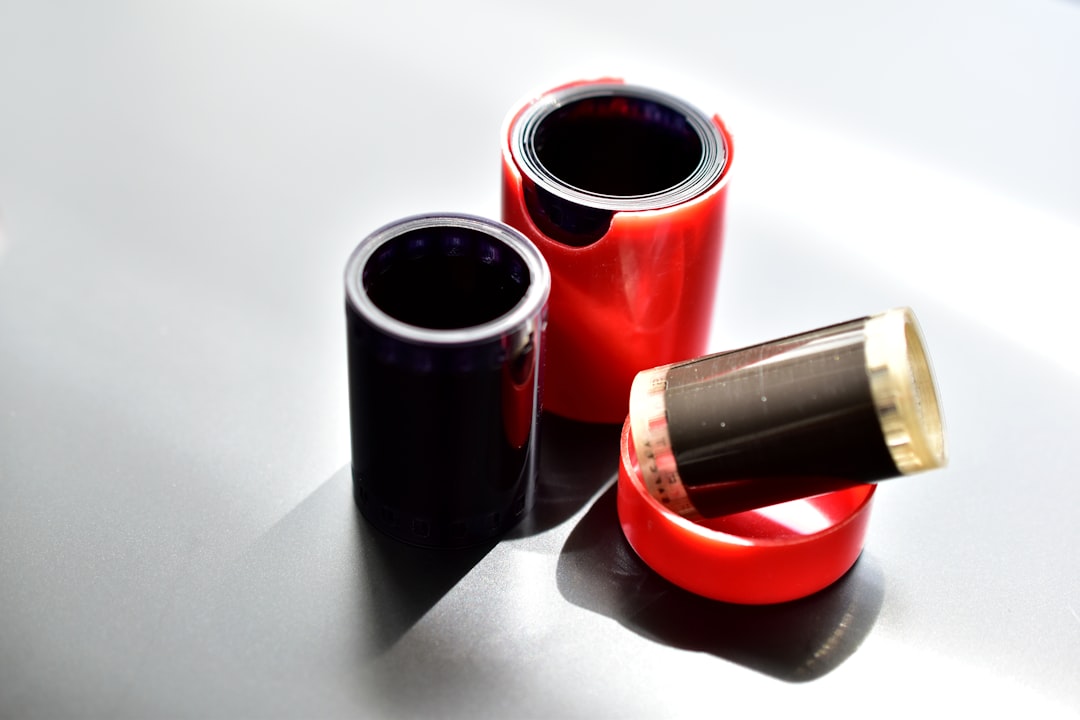

Engage prospects with a scan and streamline customer engagement with FREE QR code marketing tools by Sona – no strings attached!
Create a Free QR CodeFree consultation

No commitment

Engage prospects with a scan and streamline customer engagement with FREE QR code marketing tools by Sona – no strings attached!
Create a Free QR CodeFree consultation

No commitment
Ink cartridge refill services face mounting challenges when it comes to bridging the offline-to-online gap and capturing high-value prospects throughout the customer journey. Despite the growing demand for quick, eco-friendly, and affordable printing solutions, many businesses struggle to track which physical touchpoints, such as signage, receipts, or packaging, actually convert interest into action. Traditional analog methods such as loyalty cards or paper coupons are notoriously difficult to track and often miss high-intent prospects who never formally express interest, leading to missed opportunities and incomplete data.
Increasingly, customers expect seamless, low-friction experiences that let them access product information, book services, or leave feedback from their own devices. However, a lack of visibility into who interacts with printed materials or browses in-store often means that high-value prospects remain anonymous and unpursued, making it harder for refill services to adapt their offers or measure what actually drives conversions.
QR codes in marketing have emerged as a practical solution to these pain points, turning every physical touchpoint into an instant digital bridge and a source of actionable data. By embedding QR codes into every step of the experience, ink cartridge refill services can gain critical insight into who is engaging, what content resonates, and where conversion opportunities exist. This unlocks smarter targeting and stronger, data-driven ROI.

For ink cartridge refill services, the inability to recognize and follow up with high-intent prospects, especially those who do not submit forms or leave paper traces, means many potentially valuable customers never receive a tailored offer or reminder. QR codes empower businesses to replace these missed connections with instant, trackable interactions that move people from consideration to action with minimal friction.
This step-by-step approach shows how to apply QR codes across touchpoints to improve conversion rates. It replaces outdated, static tools such as paper loyalty cards, manual sign-up sheets, and printed brochures that can neither adapt nor reveal who engaged. When paired with analytics and a CRM, every scan becomes a data point that fuels better targeting and timely follow-up.
With each scan, anonymous customer interest becomes actionable insight. Your team can follow up faster and lift conversion rates while making the experience easier for the customer.

In refill environments where conversions often hinge on brief in-person moments, such as a quick store visit, a conversation at the counter, or a glance at packaging, lost visibility into anonymous traffic means many high-value leads go uncaptured. QR codes give those moments a digital backbone, allowing businesses to measure interest, deliver immediate value, and build a repeatable funnel from the physical world.
They also align perfectly with customer expectations. Shoppers want instant price comparisons, clear compatibility information, and easy booking, all from their own phones. QR codes meet that need without asking customers to type URLs or download apps. For operations teams, they introduce a reliable layer of data collection and content agility that static print materials lack.
For ink cartridge refill services, QR codes transform appointment cards, shelf talkers, service stickers, and even invoices into measurable gateways that accelerate decisions and improve revenue attribution.

Choosing the right QR format ensures that your campaign matches customer intent and captures the data you need. In refill services, the most effective codes simplify booking, educate on compatibility and sustainability, and keep contact details at hand for repeat orders.
Dynamic QR codes are especially powerful in this vertical because pricing, availability, and promotional angles often change. With dynamic codes, marketing teams can refresh destinations on the fly and maintain performance without reprinting. Choosing formats that align with your top use cases makes it easier for customers to complete tasks and for teams to track outcomes.
Selecting formats that capture and differentiate intent, such as booking versus education versus support, enables you to segment audiences with precision and reduce missed opportunities across the journey.

Many refill services focus on the transaction and overlook the rich engagement possibilities that come before and after. Strategic QR placement turns everyday materials into engagement engines that uncover upsell, cross-sell, and retention potential.
A strong approach considers the physical context in which scanning happens. Customers at the counter will respond to different prompts than customers opening a refill kit at home. Mapping placements to likely intent allows you to deliver the right message at the right moment and to measure which triggers work best.
By analyzing which placements produce high-intent engagement, you can optimize creative and offers. Each refined asset becomes a more efficient driver of growth and attribution.
QR codes excel when they remove friction from high-value actions. In refill services, the most valuable scans usually involve booking, education, cost comparison, or loyalty engagement. When you connect each scan to a measurable outcome, you can learn which content moves customers forward and which audiences need more support.
A good practice is to tie each use case to a destination that answers a specific question in the moment. Customers deciding whether to refill or replace need instant cost clarity, while eco-conscious buyers respond to recycling incentives. Matching use cases to common interactions maximizes both conversion and satisfaction.
When every use case is tracked from scan to conversion, it becomes possible to identify underserved segments, improve follow-up and content relevance, and scale what works across locations.
Every scan is a behavioral signal that reveals intent, context, and timing. By deploying distinct QR codes across key touchpoints, you can tag audiences automatically and run targeted follow-up that respects where each person is in the journey.
The goal is to convert one-size-fits-all marketing into segmented nurture paths. A first-time visitor who scanned a cost comparison needs different follow-up than a loyal customer who scanned a recycling program code. The more you differentiate these audiences, the more relevant your messaging becomes, and the higher your conversion rates will climb.
Actionable segmentation ensures you nurture the right customers with the right content at the right time, while reducing wasted spend on audiences that are not ready to convert.
QR codes connect offline engagement with digital measurement, making them a natural fit across print, in-store, and digital channels. When you deploy them consistently and centralize the data, you build a more complete picture of the customer journey and improve coordination across marketing and operations.
For refill services, this integration often spans counter displays, direct mail, packaging, and instructional video content. The aim is simple: make the next step obvious and effortless, then measure how each channel performs so you can invest where returns are strongest.
With a centralized platform such as Sona QR, you can manage codes across channels, monitor performance in real time, and sync scan data with your CRM. That coordination produces a connected offline-to-online funnel that reduces friction and boosts conversion.
The temptation to treat QR deployments as set and forget is strong, yet it leads to missed optimization and incomplete data. A disciplined campaign approach addresses planning, design, deployment, and measurement, ensuring that each code contributes to measurable outcomes.
Below is a practical checklist tailored to ink cartridge refill services. Use it to align teams, reduce guesswork, and create repeatable processes that compound results over time.
Clarify what you want the campaign to achieve. Typical goals include driving new appointments, increasing loyalty enrollments, promoting eco-friendly ink, or boosting recycling participation. The more specific the goal, the easier it is to design the right destination and CTA.
Choose a code format that supports both customer convenience and your tracking needs. Dynamic QR codes are recommended for most refill campaigns because they allow edits and A/B tests without reprints.
Design choices affect whether customers notice and trust your code. Testing ensures that the code works across devices and real-world conditions.
Place codes where they intersect with natural decision points. Balance visibility with context to match what customers need in that moment.
Close the loop with analytics. Use each scan as a signal and refine campaigns based on actual performance rather than assumptions.
Start creating QR codes for free at Sona QR.
Attribution has long been a pain point for refill services that rely on print and in-person interactions. Without connecting scans to outcomes, it is hard to know which assets and messages are worth continued investment. QR analytics solve this by translating real-world engagement into measurable steps in the funnel.
The key is to move beyond counting scans and toward linking scans to bookings, purchases, and lifetime value. With the right tools, including Sona QR and Sona, an AI-powered marketing platform for identity resolution and revenue attribution, you can enrich contacts with scan metadata, trigger playbooks instantly, and attribute revenue to the campaigns that helped close the deal.
This closed-loop visibility turns QR codes into a performance channel. You can prove impact, allocate budget intelligently, and keep refining campaigns based on real outcomes rather than guesswork.
Scaling QR across locations and materials requires discipline. The most successful programs combine unique codes per asset, consistent tracking conventions, and automated follow-up. These practices create a reliable feedback loop that improves both marketing precision and customer experience.
Choose the tactics that match your operating environment and the media your customers see most often. For refill services, invoices, packaging, and in-store displays are usually the top performers, followed closely by direct mail in neighborhoods with high printer density.
By weaving tracking and automation into your QR strategy, you create a compounding engine that converts curiosity into measurable business value.

QR-driven programs are already improving outcomes across the refill landscape. The most compelling examples focus on making high-value actions easy and on closing the feedback loop so teams can improve fast.
These ideas can be adapted to businesses of any size. The common thread is that each scan leads to something immediately useful for the customer, paired with data that helps the business learn and iterate.
These examples reflect a simple principle. When every scan unlocks value for customers and learning for the business, continuous improvement becomes inevitable.
Even strong QR strategies can stumble if operational realities are ignored. Scans fail when codes are too small or placed on reflective surfaces, and campaigns underperform when CTAs are vague or landing pages are generic. Addressing these issues up front protects your investment and improves outcomes.
Think of QR deployment as a customer experience design exercise. Every element, from placement to message to follow-up, should serve a clear purpose and be validated with data.
Avoiding pitfalls such as missing CTAs, poor visibility, and one-size-fits-all destinations keeps your QR program efficient and continually improving.
QR codes have fundamentally changed the way ink cartridge refill services engage customers and optimize their marketing strategies, transforming every interaction into a measurable, actionable opportunity. From preventing lost leads due to anonymous traffic to nurturing sustainable engagement and loyalty, QR codes now enable refill providers to reach high-value prospects where traditional methods fell short.
By embracing QR deployments that centralize data, enable real-time segmentation, and connect offline actions to digital follow-up, services can finally align their marketing with the real needs and expectations of today’s tech-savvy, eco-conscious consumers, achieving both operational efficiency and lasting business growth.
Advanced QR solutions are not a luxury, but a practical evolution in responding to industry pain points. With the right blend of creativity, tracking, and follow-up, refill businesses are empowered to make better decisions, personalize at scale, and transform every scan into a pathway for mutual customer and business success.
QR codes have revolutionized the ink cartridge refill services industry by turning traditional marketing efforts into dynamic, measurable growth opportunities. Whether it’s streamlining customer acquisition, enhancing user convenience through instant access to refill instructions or promotions, or gathering valuable engagement data, QR codes transform every printed material into a powerful conversion tool. Imagine knowing which refill offers drive repeat business and being able to update those offers instantly without reprinting labels or flyers.
With Sona QR, creating dynamic, trackable QR codes is effortless. You can update campaigns in real time, monitor scan activity, and directly link customer interactions to revenue growth—all while delivering seamless, personalized experiences that keep customers coming back. Start for free with Sona QR today and turn every scan into a loyal customer and every refill into a new opportunity.
You can find reliable ink cartridge refill services by scanning QR codes on storefronts, counter displays, refill kits, or business cards that provide instant access to local providers and booking options.
Refilling an ink cartridge typically involves booking a service through QR codes that link to online scheduling, followed by either in-store refill or drop-off, with additional access to tutorials and compatibility guides provided via QR scans.
QR codes on store displays and packaging often link to cost comparison tools that show refilling is generally more affordable and eco-friendly than purchasing a new cartridge.
Refilling ink cartridges reduces waste by reusing existing cartridges, supports recycling programs promoted through QR codes, and lowers the environmental impact associated with manufacturing new cartridges.
Refilling can be better for printers if done using reputable services that provide compatibility checks via QR codes and avoid common issues like poor print quality or cartridge damage.
Best practices include following tutorials accessed through QR codes, enrolling in loyalty and maintenance programs, and using eco-friendly inks recommended by refill services.
A reputable service often uses trackable QR codes linked to customer reviews, loyalty programs, compatibility information, and transparent pricing, enabling measurable and trustworthy interactions.
Print quality can be maintained if refills are done by trusted services that provide compatibility guides and use quality inks, which can be verified through QR code resources.
Common issues include poor print quality, compatibility problems, and potential printer damage, which can be minimized by using refill services that provide instant compatibility checks via QR codes.
You can verify printer compatibility by scanning QR codes on refill packaging or store displays that link to compatibility guides and calculators.
Use Sona QR's trackable codes to improve customer acquisition and engagement today.
Create Your FREE Trackable QR Code in SecondsJoin results-focused teams combining Sona Platform automation with advanced Google Ads strategies to scale lead generation

Connect your existing CRM

Free Account Enrichment

No setup fees
No commitment required

Free consultation

Get a custom Google Ads roadmap for your business






Launch campaigns that generate qualified leads in 30 days or less.
